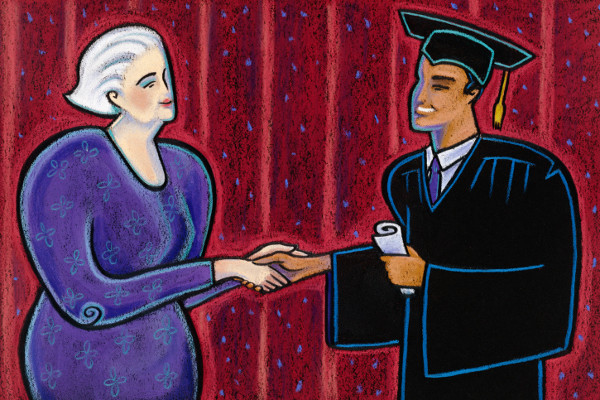Research is often seen as a more or less unbiased activity, conducted by people whose personal preferences, opinions and lives should be kept in the background whilst conducting their research and analyzing their data. The thesis itself is a professional narration that hopefully inspires the reader with confidence about the rigor of the study and the significance of its conclusions. The language of the writing is often very academic and attests the writer’s ability to fluently engage in scientific discourse.
There is, however, one part of your thesis where you can let your personality shine through, a section that celebrates not just you as an impartial researcher, but also you as a unique person. The acknowledgement section of a dissertation (generally featured at the beginning of your thesis) is often what the reader gets to first. Although some universities have certain requirements regarding this section (length, formatting, etc.) that you will need to follow, this section generally gives you more liberty, so you can give the reader a glimpse into who you really are. It gives you a brief opportunity to reflect on your experience and thank the people who supported and helped you along the way.
The acknowledgement section is much less structured and prescribed, when compared to the other parts of your thesis. There are a few points, however, you might want to consider. Also, you need to make sure you do not leave someone important out of your thanking section (e.g. your supervisor).
The Reflective Part of your Acknowledgements
The acknowledgement section usually opens with a personal reflection of the thesis process. It can discuss the challenges you faced over the years — for example: time management, access difficulties and finances. You can be honest here and describe some of your trials and tribulation (both internal and external), but you should also tell about how you overcame these hurdles and what you learned in the process. Don’t be too wordy; allow 20 to 30 percent of your acknowledgement section for this and then move on to thanking significant people who were there when the challenges occurred.
The Thanking Part of your Acknowledgements
There are people you want to thank and some you might feel obliged to mention. Hopefully, you had a helpful and motivating supervisor/tutor who deserves sincere gratitude. But even if your supervisor was somewhat absent from the whole process, it is customary to thank them nonetheless. You might just choose to do it with a little bit less enthusiasm.
Make a list of people and organizations you wish to thank and make a note of how they helped you or what they did to contribute. Decide in what order you want to thank them — there is no steadfast rule about structure, and people go about this in different ways (e.g. first thanking their supervisor and committee and then their family, friends, etc., or thanking the people they feel most grateful towards first). It is also expected to mention your participants in the thanking section, since without them your study would not have been brought to fruition.
Also, some candidates decide to dedicate their thesis to a person or a group of people. This can be specified at the end of your acknowledgement section, but some people prefer to do it on a separate page. So schools request that you do this on a separate dedication page and not in the acknowledgements.
Don’t be shy to reveal some personal insights, and give a little information to entice the reader. Although this might be the last part of the dissertation you write, see it as your unique chance to touch people in your own personal way.
